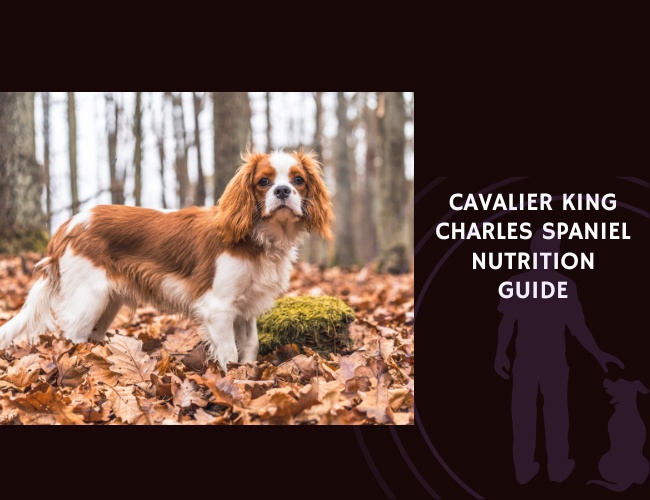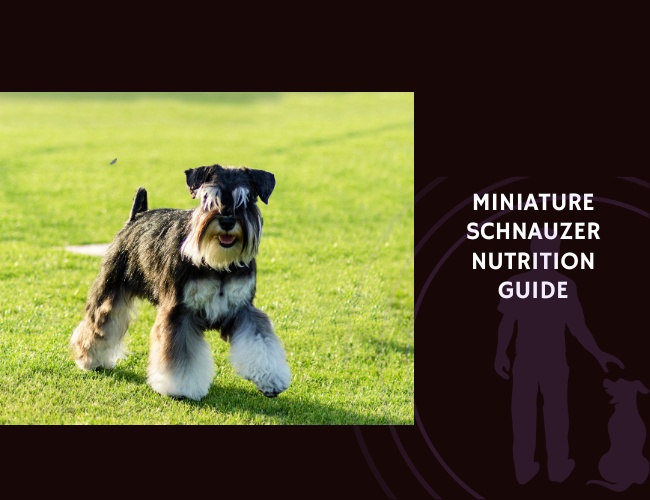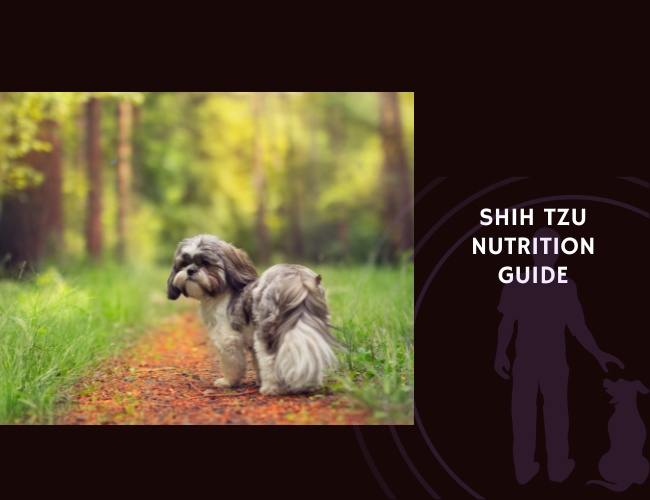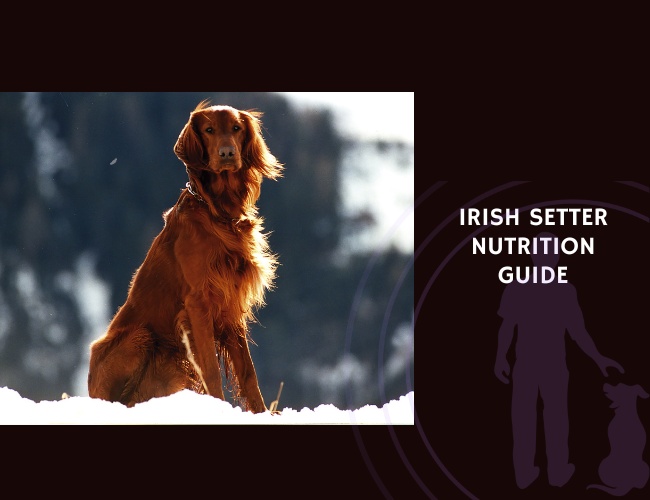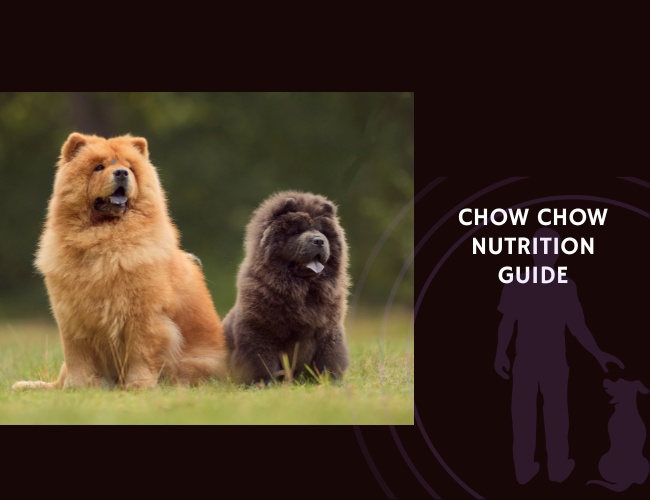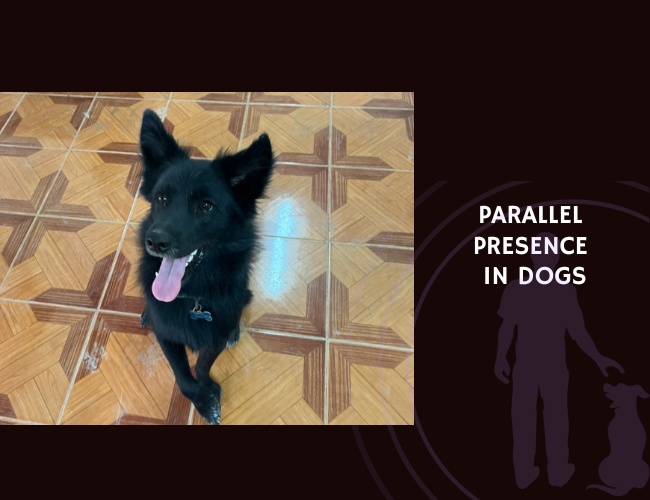Introduction: Understanding Your Cavalier’s Unique Nutritional Journey
The Cavalier King Charles Spaniel, with their expressive eyes and gentle disposition, has captured hearts for centuries. Originally bred as lap dogs for British royalty, these affectionate companions carry unique nutritional needs that reflect both their aristocratic heritage and their modern role as beloved family members. Understanding how to properly nourish your Cavalier isn’t just about filling their bowl—it’s about supporting their vibrant personality, maintaining their silky coat, and most importantly, protecting their precious heart health.
As we embark on this nutritional journey together, you’ll discover that feeding your Cavalier King Charles Spaniel is both an art and a science. These charming spaniels, typically weighing between 13-18 pounds, possess a metabolism that runs faster than larger breeds, yet they’re prone to weight gain—a delicate balance that requires your thoughtful attention. Let us guide you through the essential knowledge that will help your furry friend thrive from puppyhood through their golden years.
Did you know that your Cavalier’s nutritional needs are as unique as their personality? From their predisposition to certain heart conditions to their sensitive digestive systems, every aspect of their diet plays a crucial role in their overall wellbeing. Whether you’re welcoming a new puppy into your home or seeking to optimize your senior companion’s diet, this comprehensive guide will equip you with the knowledge to make informed decisions about your Cavalier’s nutrition. 🧡
Breed-Specific Metabolism & Digestive Traits
Understanding Your Cavalier’s Metabolic Engine
Your Cavalier King Charles Spaniel operates with a metabolic rate that’s surprisingly efficient for their size. This small to medium-sized breed burns calories at a pace that would surprise many owners—approximately 30-40 calories per pound of body weight daily for moderately active adults. This relatively high metabolic rate means your Cavalier needs nutrient-dense foods that pack quality nutrition into appropriately sized portions.
The basal energy requirements (BER) for your Cavalier vary significantly based on several factors:
- Age: Puppies require nearly double the calories per pound compared to adults
- Activity Level: A lap-warmer needs fewer calories than an agility enthusiast
- Body Condition Score (BCS): Maintaining an ideal score of 4-5 out of 9 is crucial
- Individual Metabolism: Just like humans, some Cavaliers are naturally “easy keepers”
You might notice your Cavalier has a hearty appetite that doesn’t always match their actual needs. This enthusiasm for food, combined with those irresistible spaniel eyes, creates the perfect storm for overfeeding. Remember, maintaining a healthy weight isn’t just about appearance—it’s about protecting their heart and joints from unnecessary strain.
The Cavalier’s Digestive System: Small but Mighty
Your Cavalier’s digestive system reflects their compact size with some unique characteristics that influence how you should approach feeding:
Stomach Capacity: Their relatively small stomach means large meals can cause discomfort or even increase the risk of gastric issues. Think of it this way—your Cavalier’s stomach is about the size of a tennis ball when moderately full. This anatomical reality suggests that dividing their daily food intake into 2-3 smaller meals promotes better digestion and nutrient absorption.
Digestive Efficiency: Generally, Cavaliers demonstrate good digestive efficiency, but individual sensitivities can emerge. Some signs your Cavalier might be experiencing digestive challenges include:
- Excessive gas or bloating after meals
- Inconsistent stool quality
- Reluctance to eat or food avoidance
- Vomiting more than occasionally
The Obesity Predisposition: Here’s where genetics plays a challenging hand. Cavaliers possess what researchers call “food motivation”—essentially, they’re hardwired to seek and enjoy food. This trait, combined with their lower exercise requirements compared to working breeds, creates a perfect recipe for weight gain. Studies show that over 40% of Cavaliers are overweight or obese, making portion control not just important, but essential. 🐾
Macronutrient Requirements: Building Blocks for Health
Protein: The Foundation of Vitality
Protein serves as the cornerstone of your Cavalier’s nutrition, supporting everything from their lustrous coat to their playful energy. But not all proteins are created equal, and understanding your Cavalier’s specific needs at each life stage ensures optimal health.
Puppy Protein Power (Birth to 12 months): Growing Cavalier puppies require robust protein levels—typically 22-28% of their diet’s dry matter. This higher percentage supports:
- Rapid muscle development
- Brain and nervous system maturation
- Immune system strengthening
- Healthy bone formation
Quality matters immensely during this stage. Look for named protein sources like “chicken meal” or “salmon” rather than generic “meat meal.” Your puppy’s developing body needs complete amino acid profiles found in high-quality animal proteins.
Adult Maintenance (1-7 years): Once your Cavalier reaches adulthood, protein requirements moderate to 18-22% of dry matter. This level maintains:
- Lean muscle mass
- Coat health and shine
- Enzyme and hormone production
- Daily energy needs
Senior Support (7+ years): Contrary to outdated beliefs, senior Cavaliers often benefit from slightly elevated protein levels (20-25%) to combat age-related muscle loss. However, the key lies in digestibility—senior formulas should feature easily processed proteins that don’t strain aging kidneys.
Fat: Essential Energy and So Much More
Fat often gets a bad reputation, but for your Cavalier, it’s absolutely vital. Beyond providing concentrated energy, dietary fat delivers essential fatty acids that your dog’s body cannot produce independently.
The Optimal Fat Range: Adult Cavaliers thrive on diets containing 15-20% fat (dry matter basis). This range provides:
- Sustained energy without excess calories
- Essential fatty acid delivery
- Enhanced food palatability
- Fat-soluble vitamin absorption (A, D, E, K)
The Omega Balance: Perhaps no nutritional factor impacts your Cavalier’s health more profoundly than the omega-3 to omega-6 fatty acid ratio. Given their predisposition to heart disease and inflammatory conditions, maintaining a ratio closer to 1:1 (rather than the typical 10:1 omega-6 heavy ratio in many commercial foods) can provide significant benefits:
- Omega-3 Benefits: Reduced inflammation, improved heart health, cognitive support
- Quality Sources: Fish oil, flaxseed, chia seeds
- Supplementation Consideration: Many Cavalier owners find omega-3 supplementation beneficial
Carbohydrates: The Controversial Component
While dogs don’t have a strict requirement for carbohydrates, they can serve valuable purposes in your Cavalier’s diet when chosen wisely.
Complex vs. Simple: Your Cavalier’s small size and tendency toward weight gain make carbohydrate selection crucial:
- Preferred Complex Carbs: Sweet potatoes, brown rice, oats, barley
- Limit Simple Carbs: White rice, corn syrup, excessive treats
- Benefits of Fiber: Aids digestion, promotes satiety, supports healthy weight
Individual Tolerance: Some Cavaliers demonstrate remarkable grain tolerance, while others thrive on grain-free formulations. Watch for signs of carbohydrate intolerance:
- Excessive gas or bloating
- Skin irritation or ear infections
- Loose stools or digestive upset
- Weight gain despite controlled portions
Micronutrient Profile: The Hidden Heroes
Vitamins: Small Molecules, Big Impact
Your Cavalier’s vitamin needs mirror those of other breeds in many ways, but certain vitamins deserve special attention given breed-specific health concerns.
Vitamin E: The Heart Helper: Given the Cavalier’s predisposition to Myxomatous Mitral Valve Disease (MMVD), vitamin E’s antioxidant properties become particularly valuable. This fat-soluble vitamin:
- Protects cell membranes from oxidative damage
- Supports immune function
- May help slow progression of heart disease
- Works synergistically with selenium for maximum benefit
B-Complex Vitamins: Energy and Nervous System Support: The B-vitamin family plays crucial roles in your Cavalier’s health:
- B1 (Thiamine): Essential for nervous system function
- B6 (Pyridoxine): Supports protein metabolism and red blood cell formation
- B12 (Cobalamin): Crucial for neurological health
- Folate: Important for DNA synthesis and cell division
Vitamin D: The Sunshine Vitamin: While dogs can synthesize some vitamin D through sun exposure, dietary sources remain important:
- Supports calcium absorption for strong bones
- Plays a role in immune function
- May influence mood and behavior
- Found naturally in fish, eggs, and fortified foods
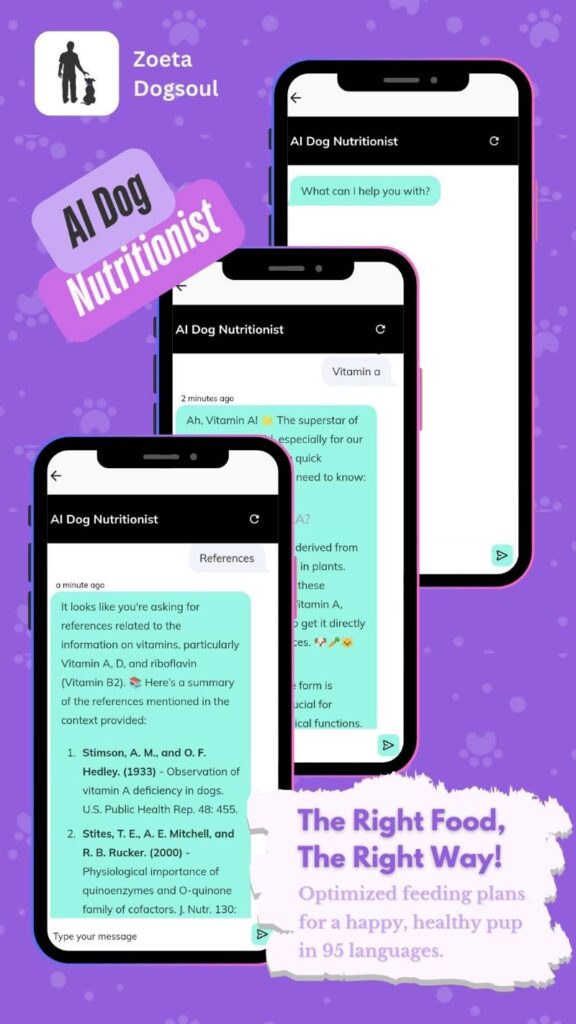
Minerals: The Structural Support System
Minerals form the foundation of your Cavalier’s skeletal system and facilitate countless biochemical reactions.
Calcium and Phosphorus: The Dynamic Duo: Maintaining the proper calcium-to-phosphorus ratio (ideally 1.2:1 to 1.5:1) is crucial for:
- Proper bone development in puppies
- Maintaining skeletal strength in adults
- Supporting muscle contractions
- Facilitating nerve transmission
Trace Minerals: Small Amounts, Big Responsibilities:
- Zinc: Supports skin health, wound healing, and immune function
- Selenium: Works with vitamin E as an antioxidant
- Iron: Essential for oxygen transport in blood
- Copper: Important for coat color and quality
Antioxidants: Your Cavalier’s Cellular Bodyguards
Antioxidants deserve special mention for Cavaliers due to their role in combating oxidative stress—a factor in both heart disease and neurological conditions.
Key Antioxidant Players:
- Vitamin C: While dogs produce their own, supplementation may benefit stressed or ill Cavaliers
- Carotenoids: Found in colorful vegetables, support eye and immune health
- Flavonoids: Present in fruits and vegetables, offer anti-inflammatory benefits
- Coenzyme Q10: Particularly important for heart health
Common Food Sensitivities and Intolerances
Identifying the Culprits
Your Cavalier’s sensitive nature extends to their digestive system, where food sensitivities can manifest in various ways. Understanding these sensitivities helps you provide optimal nutrition while avoiding unnecessary discomfort.
Common Trigger Foods: Through years of veterinary observation and owner reports, certain ingredients frequently cause issues in Cavaliers:
- Grain-Based Ingredients: Wheat, corn, and soy top the list of problematic grains
- Protein Sources: Beef and chicken are surprisingly common allergens
- Dairy Products: Many Cavaliers lack sufficient lactase enzyme for dairy digestion
- Artificial Additives: Colors, flavors, and preservatives can trigger reactions
Clinical Signs to Watch: Food sensitivities in your Cavalier might present as:
Gastrointestinal Signs:
- Chronic soft stools or diarrhea
- Excessive gas or bloating
- Vomiting (especially bile in the morning)
- Decreased appetite or food avoidance
Dermatological Manifestations:
- Persistent itching, especially paws and ears
- Red, inflamed skin
- Chronic ear infections
- Hot spots or recurring skin infections
Behavioral Changes:
- Lethargy after meals
- Excessive licking or chewing
- Restlessness or discomfort
- Changes in mood or activity level
The Elimination Diet Approach
When food sensitivities are suspected, an elimination diet provides the gold standard for diagnosis. This systematic approach requires patience but yields valuable insights:
- Start with a Novel Protein: Choose a protein your Cavalier has never eaten (venison, duck, kangaroo)
- Add a Single Carbohydrate: Sweet potato or white potato often work well
- Feed Exclusively for 8-12 Weeks: No treats, table scraps, or flavored medications
- Gradual Reintroduction: Add previous ingredients one at a time, watching for reactions
- Document Everything: Keep a detailed food and symptom diary
Remember, this process requires commitment, but identifying trigger foods can dramatically improve your Cavalier’s quality of life. 🧡
Life Stage Adjustments: Nutrition Through the Years
Puppy Nutrition: Building a Strong Foundation (Birth to 12 Months)
Your Cavalier puppy’s first year sets the stage for lifelong health. During this critical period, nutrition influences not just growth, but also immune development, cognitive function, and even temperament.
The First 8 Weeks:
- Weeks 1-4: Mother’s milk provides complete nutrition
- Weeks 4-6: Gradual introduction to softened puppy food
- Weeks 6-8: Transition to regular puppy food schedule
Growth Phase Nutrition (2-12 months): Your growing Cavalier requires careful nutritional support:
- Caloric Density: Puppies need 2-3 times the calories per pound as adults
- Feeding Frequency: 3-4 meals daily until 6 months, then 2-3 meals
- Portion Control: Despite higher needs, avoid overfeeding to prevent developmental issues
- Growth Monitoring: Weekly weigh-ins help ensure appropriate growth rate
Special Considerations for Cavalier Puppies:
- Avoid Rapid Growth: Excessive calories can stress developing joints
- DHA Supplementation: Supports brain and vision development
- Controlled Calcium: Too much can cause skeletal abnormalities
- Socialization Meals: Use feeding time for positive training experiences
Adult Maintenance: The Prime Years (1-7 Years)
Adult Cavaliers enter their maintenance phase with established dietary needs, but this doesn’t mean nutrition becomes less important. This stage focuses on maintaining optimal body condition while preventing future health issues.
Daily Caloric Needs: A typical adult Cavalier requires:
- Sedentary: 25-30 calories per pound body weight
- Moderately Active: 30-35 calories per pound
- Very Active: 35-40 calories per pound
Meal Timing and Frequency: Most adult Cavaliers do well with:
- Two Meals Daily: Morning and evening feedings
- Consistent Schedule: Same times each day support digestive health
- Pre-Activity Considerations: Wait 1-2 hours after meals before vigorous exercise
Weight Management Strategies: Given their obesity predisposition, maintaining ideal weight requires:
- Regular Body Condition Scoring: Feel ribs easily but don’t see them
- Measured Portions: Use a measuring cup, not a coffee mug
- Treat Accounting: Treats shouldn’t exceed 10% of daily calories
- Activity Integration: Daily walks support both weight and heart health
Senior Care: The Golden Years (7+ Years)
As your Cavalier enters their senior years, nutritional needs shift to support aging bodies while managing emerging health concerns. This stage requires the most individualized approach to nutrition.
Metabolic Changes: Senior Cavaliers experience:
- Slower Metabolism: Reduced caloric needs by 10-20%
- Decreased Muscle Mass: Higher quality protein becomes crucial
- Reduced Digestive Efficiency: More digestible ingredients needed
- Changed Taste Preferences: May become pickier eaters
Senior-Specific Nutritional Support:
- Joint Support: Glucosamine and chondroitin for mobility
- Cognitive Function: Antioxidants and medium-chain triglycerides
- Kidney Support: Controlled but adequate protein levels
- Heart Health: Continued omega-3 supplementation
Feeding Modifications:
- Softer Foods: May be needed for dental issues
- Warming Meals: Enhances aroma and palatability
- Smaller, Frequent Meals: Easier on aging digestive systems
- Hydration Focus: Increased water content in food
Reproductive Nutrition: Supporting New Life
For breeding Cavaliers, specialized nutrition supports both mother and puppies:
Pre-Breeding Preparation:
- Achieve ideal body condition before breeding
- Increase folic acid and B-vitamins
- Ensure adequate calcium stores
- Consider fertility-supporting supplements
Pregnancy Nutrition (Weeks 1-9):
- Weeks 1-5: Maintain normal feeding
- Weeks 6-9: Gradually increase calories by 25-50%
- Final Week: Multiple small meals as stomach space decreases
- Calcium Caution: Avoid supplementation to prevent eclampsia
Lactation Demands: Nursing mothers require:
- 2-4x Normal Calories: Depends on litter size
- Free-Choice Feeding: Often necessary during peak lactation
- High-Quality Protein: Essential for milk production
- Abundant Fresh Water: Critical for milk volume
Gentle. Regal. Balanced.
A small frame demands thoughtful fueling.
The Cavalier’s fast metabolism, paired with a tendency toward weight gain, makes portion precision non-negotiable. Their system burns clean but stores quickly, requiring nutrient-dense, balanced meals rather than empty calories or oversized portions.
Their coat, heart, and soul are built on quality protein.
From puppyhood to senior years, your Cavalier thrives on digestible animal proteins. It fuels muscle tone, supports a silky coat, and plays a vital role in long-term cardiovascular health—particularly crucial given the breed’s genetic heart risks.



Fat isn’t the enemy—it’s their quiet ally.
Moderate, high-quality fat intake sustains energy and carries vital omega-3s that protect your Cavalier’s heart and brain. It’s not about eliminating fat, but selecting the right kind—because every bite must serve their wellbeing.
Breed-Specific Health Risks with Nutritional Relevance
Myxomatous Mitral Valve Disease (MMVD): The Heart of the Matter
MMVD affects over 50% of Cavaliers by age 5, making nutritional support for heart health paramount. While diet cannot cure MMVD, strategic nutrition can support cardiac function and potentially slow progression.
Nutritional Strategies for Heart Health:
Sodium Management:
- Early Stage: Moderate sodium restriction (100-150mg/100kcal)
- Advanced Stage: Further restriction as directed by veterinarian
- Hidden Sources: Check treats and table scraps for sodium content
Omega-3 Fatty Acids: Research suggests omega-3s may:
- Reduce inflammatory markers
- Support normal heart rhythm
- Improve cardiac cachexia in advanced cases
- Recommended dose: 40-50mg EPA+DHA per kg body weight
Antioxidant Support:
- Vitamin E: 10-20 IU per kg body weight
- Coenzyme Q10: May support cardiac energy production
- L-Carnitine: Helps heart muscle utilize energy efficiently
- Taurine: Essential for cardiac function
Weight Management: Every extra pound stresses your Cavalier’s compromised heart:
- Maintain BCS of 4-5/9
- Regular weigh-ins to catch gradual gains
- Calculate treat calories carefully
- Increase low-impact exercise as tolerated
Syringomyelia and Chiari-like Malformation: Nutritional Comfort
While these neurological conditions don’t have direct dietary cures, nutrition can support overall health and potentially reduce inflammation.
Anti-Inflammatory Nutrition:
- Omega-3 Rich Diet: May help reduce neural inflammation
- Antioxidant Foods: Blueberries, spinach, sweet potatoes
- Avoid Inflammatory Foods: Excessive omega-6 oils, processed ingredients
Weight Optimization: Excess weight may exacerbate symptoms:
- Reduces pressure on spine and nerves
- Improves mobility and comfort
- Supports overall quality of life
Hip Dysplasia and Joint Health
Though less common than in larger breeds, hip dysplasia can affect Cavaliers. Nutritional support focuses on:
Joint-Supporting Nutrients:
- Glucosamine/Chondroitin: 20mg/kg and 15mg/kg respectively
- MSM: Natural anti-inflammatory properties
- Green-Lipped Mussel: Contains unique omega-3s for joint health
Appropriate Growth Rate: For at-risk puppies:
- Avoid excessive calcium supplementation
- Maintain steady, not rapid, growth
- Use large-breed puppy food if recommended by veterinarian
Episodic Falling and Muscle Health
This Cavalier-specific condition benefits from:
- Adequate Protein: Supports muscle strength and function
- B-Vitamins: Essential for nerve function
- Magnesium: Important for muscle contraction
- Consistent Blood Sugar: Avoid large meals that spike glucose
Pancreatitis Prevention
Cavaliers show increased susceptibility to pancreatitis, making dietary fat management crucial:
Preventive Strategies:
- Moderate Fat Levels: 10-15% for at-risk dogs
- Avoid Fatty Treats: No table scraps or high-fat snacks
- Consistent Diet: Sudden changes can trigger episodes
- Small, Frequent Meals: Reduces pancreatic stress
Recovery Nutrition: Post-pancreatitis dietary management:
- Ultra-low fat initially (5-10%)
- Highly digestible proteins
- Simple carbohydrates for energy
- Gradual return to normal diet

Recommended Feeding Methods and Diet Types
Commercial Diets: Convenience Meets Nutrition
The vast majority of Cavalier owners choose commercial diets, and with good reason—quality brands offer complete, balanced nutrition with convenience.
Dry Kibble Advantages:
- Dental Benefits: Mechanical cleaning action (though not a replacement for dental care)
- Convenience: Easy storage and feeding
- Cost-Effective: Generally most economical option
- Variety: Extensive options for different needs
Selecting Quality Kibble: Look for these indicators:
- Named protein as first ingredient
- No by-product meals
- Natural preservatives (vitamin E, C)
- Appropriate protein/fat ratios for life stage
- AAFCO certification
Wet Food Considerations:
- Higher Moisture: Benefits urinary health
- Palatability: Often preferred by picky eaters
- Portion Control: Pre-portioned servings
- Storage: Requires refrigeration after opening
Raw Feeding: Back to Basics
The raw feeding movement has gained traction among Cavalier owners seeking a more “natural” approach.
Potential Benefits:
- Improved coat condition
- Smaller, firmer stools
- Better dental health
- Increased meal enjoyment
Critical Considerations:
- Bacterial Risk: Both for dog and human family members
- Nutritional Balance: Requires careful planning
- Cost: Significantly more expensive
- Time: Preparation and planning intensive
Safe Raw Feeding Practices: If choosing raw:
- Source from reputable suppliers
- Follow strict hygiene protocols
- Ensure nutritional completeness
- Regular veterinary monitoring
- Consider commercial raw options
Home-Cooked Diets: Made with Love
Some Cavalier owners prefer preparing home-cooked meals, offering ultimate control over ingredients.
Advantages:
- Complete ingredient control
- Can accommodate specific sensitivities
- Fresh, whole food nutrition
- Bonding experience with your dog
Essential Guidelines:
- Work with a Veterinary Nutritionist: Ensures balanced recipes
- Use Supplements: Home diets often lack certain nutrients
- Variety is Key: Rotate proteins and vegetables
- Proper Cooking: Destroys harmful bacteria while preserving nutrients
Sample Balanced Recipe Structure:
- 40% lean protein (cooked)
- 30% complex carbohydrates
- 20% vegetables
- 10% healthy fats and supplements
Combination Feeding: The Best of All Worlds
Many successful Cavalier owners combine feeding methods:
- Kibble base with fresh toppers
- Alternating between commercial and home-cooked
- Raw treats with kibble meals
- Wet and dry food combinations
This approach offers:
- Nutritional insurance
- Variety and interest
- Flexibility for travel
- Cost management
Practical Guidelines for Cavalier Owners
Mealtime Management: Beyond the Bowl
Creating positive mealtime experiences sets the stage for lifelong healthy eating habits.
Addressing Food-Related Behaviors:
Food Guarding: Some Cavaliers develop resource guarding around food:
- Feed in a quiet, secure location
- Avoid disturbing during meals
- Practice “trade” exercises with high-value treats
- Consider hand-feeding portions
- Seek professional help for severe cases
Speed Eating: Many Cavaliers inhale their food, risking:
- Choking or gagging
- Poor digestion
- Increased bloat risk
- Weight gain from not feeling full
Solutions for Slow Eating:
- Puzzle Feeders: Make mealtime mentally stimulating
- Slow-Feed Bowls: Physical barriers slow consumption
- Scatter Feeding: Spread kibble on a mat or grass
- Food-Dispensing Toys: Combine play with eating
- Multiple Small Portions: Natural pacing
Transitioning Foods: The 7-10 Day Rule
Your Cavalier’s sensitive digestive system requires gradual food transitions:
The Proven Method:
- Days 1-2: 75% old food, 25% new food
- Days 3-4: 50% old food, 50% new food
- Days 5-6: 25% old food, 75% new food
- Days 7+: 100% new food
Transition Tips:
- Mix foods thoroughly
- Monitor stool quality
- Slow down if digestive upset occurs
- Keep a transition diary
- Have probiotics on hand
Managing the Picky Eater
Cavaliers can develop selective eating habits that worry their devoted owners. Understanding the difference between preference and problem is key.
When Pickiness is Normal:
- Skipping occasional meals
- Preferring certain flavors
- Eating less in hot weather
- Decreased appetite during teething
When to Worry:
- Weight loss
- Lethargy accompanies poor appetite
- Vomiting or diarrhea
- Refusing food for 24+ hours
- Sudden change in eating habits
Strategies for Picky Eaters:
Environmental Modifications:
- Quiet feeding location
- Elevated bowls for comfort
- Consistent meal times
- Remove uneaten food after 20 minutes
Food Enhancements (use sparingly):
- Warm water or low-sodium broth
- Small amount of plain yogurt
- Sprinkle of parmesan cheese
- Tiny pieces of cooked egg
Behavioral Approaches:
- No treats if meals aren’t finished
- Increase exercise before meals
- Make mealtime engaging with puzzles
- Avoid caving to begging for human food
Treating Responsibly: Love Without Overindulgence
Treats play important roles in training and bonding, but require thoughtful management for weight-prone Cavaliers.
The 10% Rule: Treats should never exceed 10% of daily caloric intake:
- 15-pound Cavalier eating 450 calories daily = 45 calories in treats
- One medium dog biscuit = approximately 40 calories
- Planning prevents overindulgence
Healthy Treat Alternatives:
- Vegetables: Carrots, green beans, cucumber
- Fruits: Blueberries, apple pieces (no seeds), watermelon
- Protein: Tiny pieces of cooked chicken or turkey
- Commercial: Look for low-calorie, functional treats
Training Treat Strategy:
- Use portion of regular kibble as rewards
- Break treats into tiny pieces
- Focus on praise over food rewards
- Reserve high-value treats for important training
Hydration: The Forgotten Nutrient
Water remains the most essential nutrient, yet often receives the least attention.
Daily Water Needs:
- Approximately 1 ounce per pound body weight
- Increases with activity, heat, or dry food diet
- Lactating mothers need 3-4x normal amount
Encouraging Adequate Hydration:
- Multiple water stations throughout home
- Fresh water at least twice daily
- Consider water fountains for interest
- Add water to dry food
- Ice cubes as summer treats
Signs of Dehydration:
- Dry, sticky gums
- Skin tenting when pinched
- Lethargy
- Sunken eyes
- Decreased urination
Supplement Wisdom: When More Isn’t Better
The supplement industry offers countless options, but not all benefit your Cavalier.
Potentially Beneficial Supplements:
For Heart Health:
- Omega-3 fatty acids (fish oil)
- Coenzyme Q10
- L-carnitine
- Vitamin E
For Joint Support:
- Glucosamine/chondroitin
- MSM
- Green-lipped mussel
- Turmeric (with black pepper for absorption)
For Digestive Health:
- Probiotics
- Digestive enzymes
- Slippery elm
- Pumpkin fiber
Supplement Safety:
- Consult veterinarian before starting
- Choose reputable brands
- Start with lower doses
- Monitor for adverse effects
- Avoid mega-dosing
Creating a Nutrition Plan: Your Cavalier’s Personal Blueprint
Developing a comprehensive nutrition plan ensures your Cavalier receives optimal nutrition throughout their life.
Components of a Complete Plan:
Baseline Assessment:
- Current weight and BCS
- Activity level
- Health conditions
- Food preferences
- Treat habits
Goal Setting:
- Ideal weight range
- Health optimization targets
- Preventive nutrition focus
- Quality of life priorities
Implementation Strategy:
- Specific food choices
- Portion calculations
- Feeding schedule
- Treat allowances
- Supplement protocol
Monitoring System:
- Weekly weigh-ins
- Monthly BCS evaluation
- Bi-annual blood work
- Food diary during changes
- Regular veterinary consultations
Conclusion: Nourishing the Cavalier Spirit
As we reach the end of our nutritional journey, you now possess the knowledge to make informed decisions about your Cavalier King Charles Spaniel’s diet. From understanding their unique metabolism to managing breed-specific health risks, every aspect of nutrition plays a vital role in your companion’s wellbeing.
Remember, the perfect diet for your Cavalier is one that supports their individual needs while fitting seamlessly into your lifestyle. Whether you choose premium kibble, explore raw feeding, or create home-cooked meals with love, the key lies in providing balanced nutrition appropriate for their life stage and health status.
Your Cavalier’s trusting eyes and wagging tail remind us daily of the joy these remarkable dogs bring to our lives. By investing in their nutrition, you’re not just filling their bowl—you’re supporting their heart health, maintaining their comfortable weight, and potentially adding years to your time together. The commitment you make to understanding and meeting their nutritional needs reflects the unconditional love they offer so freely.
As you implement these nutritional strategies, remember that every Cavalier is unique. What works perfectly for one may need adjustment for another. Stay observant, work closely with your veterinary team, and trust your instincts as you know your furry friend best. With patience, knowledge, and dedication, you’ll develop a nutrition plan that helps your Cavalier King Charles Spaniel thrive through every stage of their precious life.
Is the Cavalier King Charles Spaniel right for you? If you’re ready to commit to their nutritional needs, manage their weight with loving discipline, and support their health through thoughtful feeding choices, then you’re prepared to give a Cavalier the life they deserve. Their gentle nature, combined with your dedicated care, creates a partnership that enriches both your lives immeasurably. 🐾🧡

